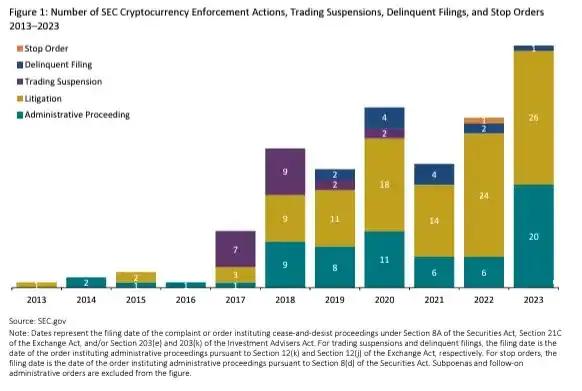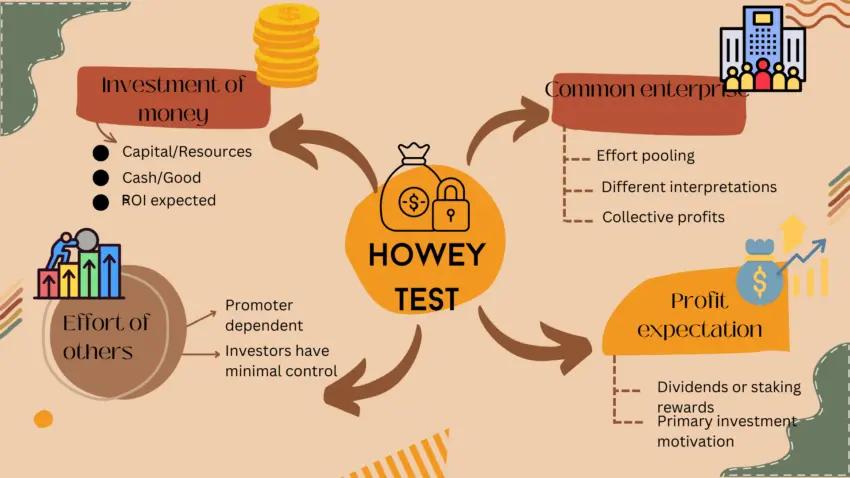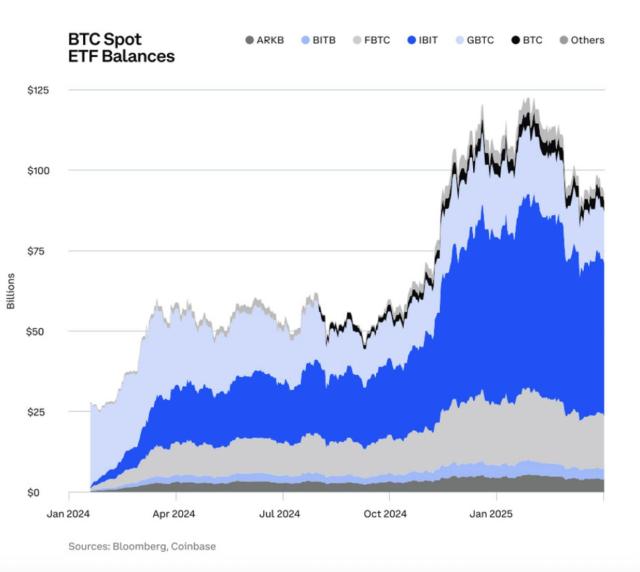On July 31, the U.S. Securities and Exchange Commission (SEC) Chairman Paul Atkins announced a profound new initiative - "Project Crypto". This blockchain transformation plan led by the SEC has a clear objective: to completely rewrite the regulatory logic for crypto assets in the United States, enabling financial markets to "move on-chain" and realize the Trump administration's grand vision of making the United States the "global crypto capital".
The previous mode of "enforcement instead of regulation" not only caused crypto industry innovative enterprises to flee to Singapore and Dubai but also missed the opportunity to lead the next-generation financial infrastructure. The launch of "Project Crypto" differs from the tone of regulatory suppression in recent years, undoubtedly sending a strong signal to the entire industry: the on-chain era of the United States begins now.
Regulatory Loosening, Uniswap, Aave, and Other DeFi Protocols Welcome a Golden Window
The attitude of successive SEC Chairmen towards crypto assets and their derivative forms - especially DeFi (decentralized finance) - often determines the temperature and activity of the U.S. market. During Gary Gensler's tenure, the SEC's regulatory strategy focused on "securities definition priority" and "enforcement-oriented", emphasizing incorporating token trading into the traditional securities framework. During his term, over 125 crypto-related enforcement actions were promoted, involving numerous DeFi projects, including the subpoena of Uniswap and the lawsuit against Coinbase, pushing the compliance threshold of on-chain products to a historical high.

After the new Chairman Paul Atkins took office in April 2025, the SEC's regulatory style underwent a fundamental transformation. He quickly launched a roundtable conference titled "DeFi and the American Spirit" to loosen DeFi regulation.
In Project Crypto, Atkins clearly stated that the original intent of U.S. federal securities laws was to protect investors and market fairness, not to curb technology architectures that do not require intermediary participation. He believes that decentralized financial systems like automated market makers (AMM) can essentially achieve non-intermediary financial market activities and should rightfully obtain institutional-level legitimacy. Developers who "just write code" should be provided clear protection and exemption, while intermediary institutions seeking to provide services based on these protocols should establish clear, executable compliance pathways.
This policy approach transformation undoubtedly releases positive signals for the entire DeFi ecosystem. Especially protocols like Lido, Uniswap, and Aave, which have already formed on-chain network effects and highly autonomous designs, will gain institutional recognition and development space under a de-intermediary regulatory logic. Protocol tokens long troubled by "securities shadows" may also reshape valuation logic against the backdrop of policy relaxation and market participant return, becoming "mainstream assets" in investors' eyes again.
Building the Next-Generation Financial Entry: Super-App Will Reshape Trading Platform Competition
Paul Atkins proposed the "Super-App" concept, which is the most practically significant and transformative idea. Atkins believes that current securities intermediaries face complex compliance structures and repeated licensing barriers when providing traditional securities, crypto assets, and on-chain services, which directly hinder product innovation and user experience upgrades. He proposed that future trading platforms should be able to integrate multiple services under one license, including non-securities crypto assets (like $DOGE), securities-type crypto assets (like tokenized stocks), traditional securities (like U.S. stocks), and staking, lending, and other services. This is not just a compliance innovation to simplify processes but the core of future trading platform competitiveness.
The regulatory layer will promote the actual implementation of this super app architecture. Atkins has clearly instructed that the SEC will draft a regulatory framework allowing crypto assets to coexist and trade on SEC-registered platforms regardless of whether they constitute securities. Simultaneously, the SEC is evaluating how to use existing authorities to relax listing conditions for certain assets on non-registered exchanges (such as platforms with only state licenses). Even derivatives platforms regulated by the CFTC may be included in some leverage functions to release greater trading liquidity. The entire regulatory reform's direction is to break the binary boundary between securities and non-securities, allowing platforms to flexibly allocate assets based on product essence and user needs, rather than being bound by compliance structures.
The most direct beneficiaries of this transformation are undoubtedly Coinbase and Robinhood. These two companies have long established diversified trading structures covering mainstream crypto assets, operating traditional securities trading, and providing lending and wallet services. Encouraged by Project Crypto, they are poised to be the first platforms to enjoy policy dividends - achieving one-stop services and bridging on-chain products with traditional user groups. Notably, Robinhood has completed the acquisition of Bitstamp this year and officially launched tokenized equity trading, listing Apple, NVIDIA, Tesla, and other U.S. stocks in ERC-20 format. This move is precisely a preview of the Super-App model: providing traditional stock trading experience through on-chain protocols without disrupting users' familiar usage methods.

On Coinbase's side, they are advancing the developer ecosystem through the Base chain, attempting to integrate exchanges, wallets, social, and application-layer services. If they can integrate traditional securities and on-chain assets at the compliance level in the future, Coinbase is highly likely to develop into an "on-chain version of Charles Schwab" or "next-generation Morgan Stanley" - not just an asset entry point, but a complete financial tool distribution and operation platform.

It can be foreseen that once the Super-App architecture is fully released, it will become the core battlefield of trading platform competition. Whoever first achieves compliant "multi-asset aggregated trading" will occupy a leading position in the next round of financial infrastructure upgrades. The regulatory layer's attitude has become increasingly clear, and platforms are already accelerating their entry. For users, this means a smoother trading experience, richer product choices, and a financial world closer to the future.
ERC-3643: From Technical Protocol to Policy Template, the Compliance Bridge for RWA Track
Regarding RWA, Paul Atkins explicitly proposed promoting the tokenization of traditional assets and specifically mentioned ERC-3643 as a token standard worth referencing in the regulatory framework. This is the only token standard publicly mentioned in the entire speech, meaning ERC-3643 has risen from a technical protocol to a policy-level reference model, its importance is self-evident.
Paul emphasized that when designing innovative exemption frameworks, the SEC will prioritize token systems with "built-in compliance capabilities", and ERC-3643's smart contracts integrate permission control, identity verification, and transaction restrictions that can directly satisfy current securities law requirements for KYC, AML, and qualified investor standards.
ERC-3643's greatest feature lies in its "compliance is code" design philosophy. It has an built-in decentralized identity framework called ONCHAINID, where all token holders must pass identity verification and meet preset rules to complete holding or transfer operations. Regardless of which public chain the token is deployed on, only users meeting KYC or qualified investor standards can truly own these assets. The smart contract layer directly completes compliance determination, no longer relying on centralized review, manual recording, or off-chain protocols.

Its biggest difference from ERC-20 is the introduction of the "permission" dimension. ERC-20 was born in a completely open, permissionless on-chain native context where any wallet address could freely receive and transfer, a completely "fungible tool". ERC-3643 targets securities, funds, bonds, and other high-value, highly regulated asset categories, emphasizing "who can hold" and "whether it's compliant", a "permission-type token standard". In other words, ERC-20 is the free currency of the crypto world, while ERC-3643 is the compliance container of on-chain finance.

Currently, ERC-3643 has been adopted by multiple countries and financial institutions globally. The European digital securities platform Tokeny has been expanding the ERC-3643 standard to private market securitization in recent years. In June this year, Tokeny announced a collaboration with digital securities platform Kerdo, planning to build a blockchain-based private investment infrastructure through ERC-3643, covering asset types such as real estate, private equity, hedge funds, and private debt.

From real estate to art collections, from private equity to supply chain notes, ERC-3643 provides underlying support for fragmentation, digitization, and global circulation of various assets. It is currently the only public chain Token standard that simultaneously possesses programmable compliance, on-chain identity verification, cross-national legal compatibility, and the ability to interface with existing financial architectures.
As Paul Atkins stated in his speech, the future securities market not only needs to "run on-chain" but also to be "compliant on-chain". In this new era, ERC-3643 may become the key bridge connecting SEC and Ethereum, TradFi and DeFi.
Entrepreneurs Returning to the US, Primary Market Set to Take Off Again on-chain
For a long time, the "Howey Test" has been the primary basis for the US Securities and Exchange Commission (SEC) to determine whether an asset constitutes a security. Specifically, it includes four elements: whether there is monetary investment, whether invested in a common enterprise, whether profits depend on others' efforts, and whether profits are expected. If a project meets these four standards, it will be deemed a security and subject to a series of securities law frameworks including pre-issuance prospectus, information disclosure, and regulatory filing.

Due to the vague test standard and inconsistent enforcement, many projects in the past few years have chosen to sacrifice the US market to avoid potential regulatory risks, even deliberately "blocking" US users and not offering airdrops or incentives.
In the latest Project Crypto policy, SEC Chairman Paul Atkins first clearly proposed: establishing reclassification standards for crypto assets, providing clear disclosure norms, exemption conditions, and safe harbor mechanisms for common on-chain economic activities such as airdrops, ICO, and Staking. The SEC will no longer default to "token issuance = securities", but will reasonably classify assets into different categories based on their economic attributes, such as digital commodities (like Bitcoin), digital collectibles (like Non-Fungible Tokens), stablecoins, or security tokens, and provide appropriate legal pathways.
This represents a key turning point: project teams will no longer need to "pretend not to issue tokens", nor use roundabout structures like foundations or DAOs to obscure incentive mechanisms, and will no longer need to register projects in the Cayman Islands. Instead, teams focused on code and driven by technology will receive positive institutional confirmation.
At a time when emerging tracks like AI, DePIN, and SocialFi are rapidly rising and market demand for early-stage financing is surging, this regulatory framework based on substantive classification and innovation encouragement is expected to trigger a wave of projects returning to the US. The US may no longer be a market crypto entrepreneurs avoid, but could become their first choice for token fundraising.
Summary
"Project Crypto" is not a single bill, but a comprehensive systemic reform. It depicts a future where decentralized software, token economy, and capital market compliance converge. Paul Atkins' attitude is also very clear: "Regulation should no longer stifle innovation, but make way for it".
For the market, this is also a clear signal of policy shift. From DeFi to RWA, from Super App to token fundraising, who can take off in this policy dividend depends on who can first respond to this US-led "on-chain capital market revolution".
Recommended Reading:
Solana and Base Founders Start Debate: Does Content on Zora Have "Basic Value"?





